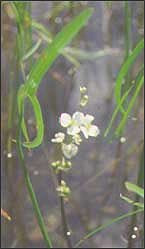Because wetlands have both land and aquatic characteristics, wetlands are some of the most diverse wildlife habitats on earth.
Two kinds of animals that are rare in wetlands is the Fernbird and the large native dragonfly.
Fernbirds prefer wetlands with dense ground cover und

er a selection of shrubs and small trees. The Fernbird is a bird found in New Orleans. It has a rich brown and white coat , with brown spots on the throat and breast. They first called it the "Swamp Sparrow" because of its color. The tail feathers are thin, dark brown, and spine-like. The birds reach a length of 18 cm. The Fernbird is a ground-dwelling bird, and is a reluctant flier, and travels mainly on foot or in occasional short flights of less. It used to be descirbed as "one of our most common" birds but it has been affected by the widespread destruction of its wetlands and is now rare. They are called "wise birds." They are well camouflaged and very secretive, fernbirds are more easily heard than seen.
The large native dragonfly which date back to the dinosaurs are now increasingly threatened by habitat destruction, pollution and climate change. They have two pairs of strong transparent wings, and an elongated body. Dragonflies are valuable predators that eat mosquitoes, and other small insects like flies, bees, ants, and butterflies. They are usually

found around lakes, ponds, streams and wetlands because their larvae, and they are aquatic. They can also deliver painful bites when threatened. They
are beneficial insects that to wetlands because they eat other harmful insects. The larvae, or immature stage, of dragonflies are laid and grow in the water. Even as adults, dragonflies do not stray particularly far from sources of water. The immature stages feed off of other aquatic insects and occasionally very small fish. The adults hunt mosquitoes and other pests. Often, when they are seen swarming, dragonflies are hunting. They can swoop down upon an airborne insect and continue flying. They hold their prey between their legs and eat on the run.
NAME THREE OTHER ANIMALS THAT CAN BE FOUND IN THE WETLANDS?
A BIRD. MAMMAL. INSECT.









